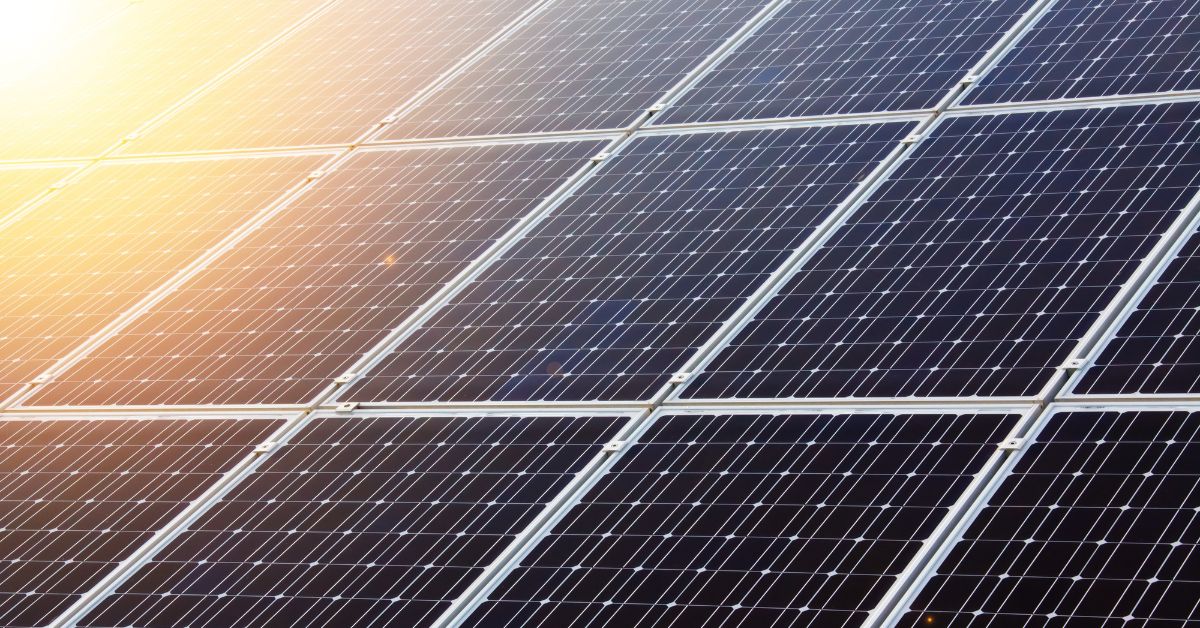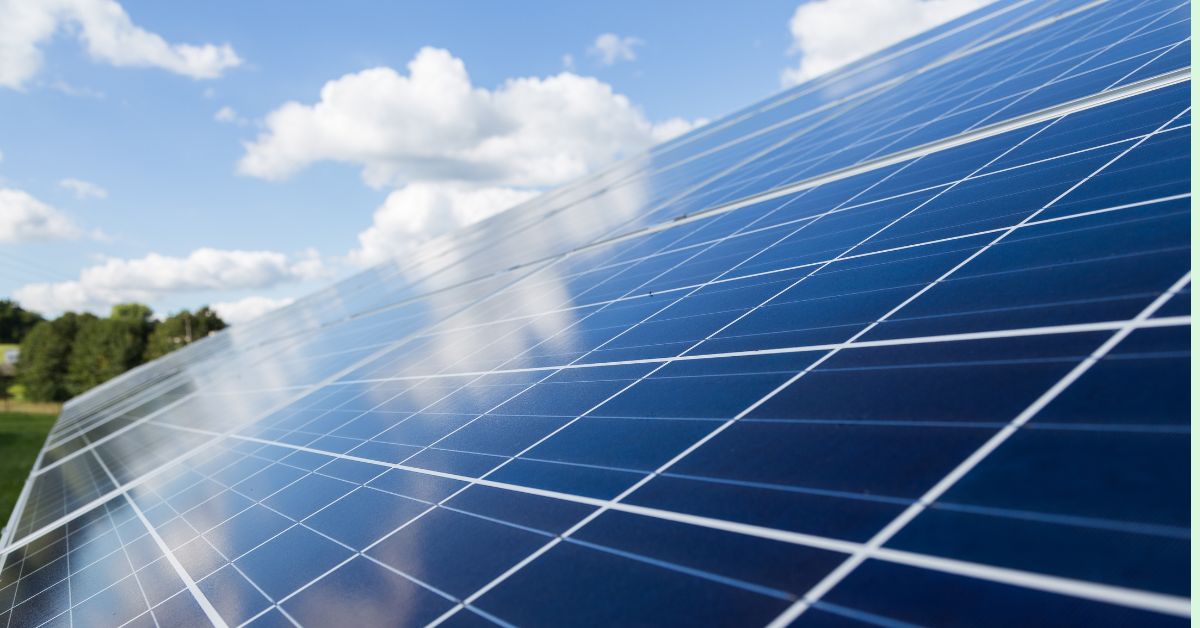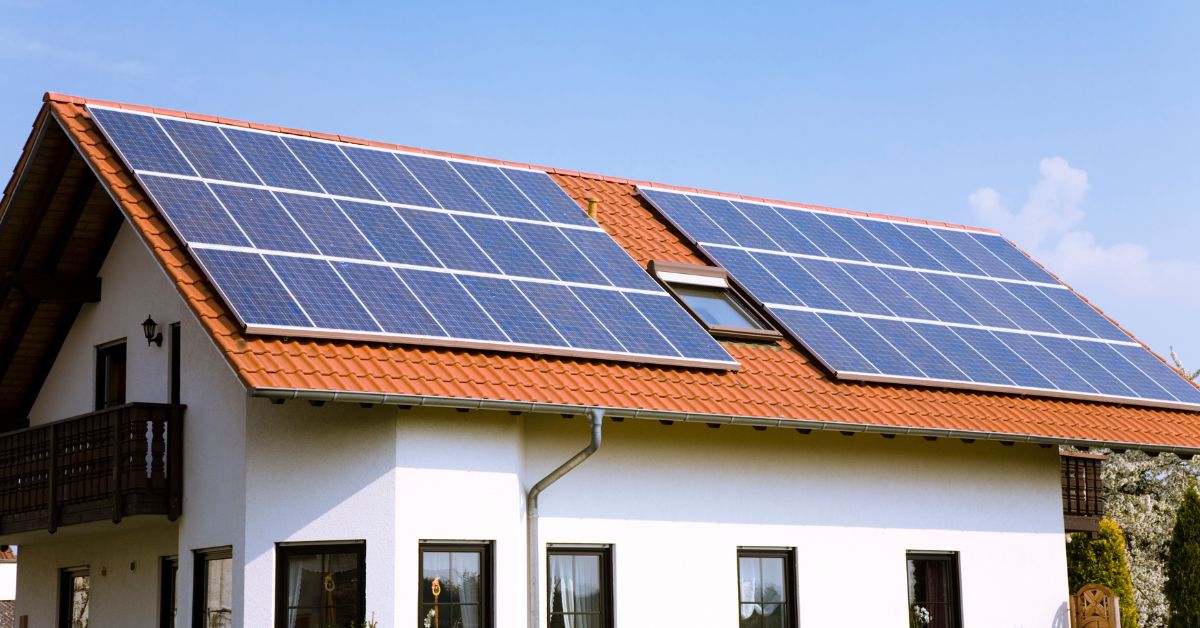Solar Energy Producing States in India
Know the details about Solar Energy Producing States in India, India’s solar energy potential is vast, with several states leading in solar power production. Rajasthan, known for its expansive desert landscape, tops the list with abundant sunlight and large-scale solar farms. Gujarat follows closely, leveraging its clear skies and flat terrain for solar parks.
Tamil Nadu, with its progressive policies, and Telangana, with its land availability, are also significant contributors. Karnataka has seen rapid growth, driven by strong state initiatives. Andhra Pradesh and Madhya Pradesh are emerging as solar hubs, thanks to their favorable climates. These states are spearheading India’s transition to clean energy, contributing to the nation’s sustainability goals.
Table of Contents
Solar Energy Producing States in India: A Comprehensive Guide
Solar energy has become a significant component of India’s renewable energy sector. As the world transitions from fossil fuels to clean energy, India is emerging as a leader in solar power production. The vast geographical expanse and favorable climate of the country provide immense potential for harnessing solar energy. In this blog, we will explore the top solar energy-producing states in India, their contributions, and their impact on the nation’s green energy goals.
India has set an ambitious target of generating 100 GW of solar power by 2022 under the National Solar Mission. By 2030, the government aims to meet 50% of the country’s energy requirements through renewable energy, with solar energy playing a critical role. The states of India are driving this revolution by establishing large-scale solar power projects and creating the necessary infrastructure for a solar-powered future. Let’s delve deeper into the major solar energy-producing states in India.
1. Rajasthan: The Solar Powerhouse
Rajasthan is undoubtedly the leader in solar energy production in India. Known for its vast deserts and abundant sunlight, Rajasthan has capitalized on its natural resources to become the largest solar power-producing state in the country. The state accounts for around 20% of India’s total installed solar energy capacity.
- Installed Solar Capacity: As of 2023, Rajasthan’s installed solar capacity exceeds 17,000 MW.
- Key Projects:
- Bhadla Solar Park: Situated in the Jodhpur district, Bhadla Solar Park is the world’s largest solar park, covering more than 14,000 acres of land with a total installed capacity of 2,245 MW. This project alone contributes significantly to India’s solar capacity.
- Pavagada Solar Park: While located in Karnataka, Rajasthan has several joint ventures with other states for developing solar parks like this one.
- Geographical Advantage: With over 325 sunny days per year and vast stretches of barren land, Rajasthan is an ideal location for setting up large solar power plants.
Rajasthan’s government has been proactive in promoting solar energy through various incentives and policies, including subsidies for solar power plants, land acquisition assistance, and investment-friendly regulations.
2. Gujarat: Leading the Solar Rooftop Revolution
Gujarat is another major player in India’s solar energy landscape. With an installed capacity of over 8,500 MW, Gujarat ranks second in the country. The state has embraced both large-scale solar parks and decentralized solar rooftop systems, making it a model for other states.

- Installed Solar Capacity: 8,500+ MW as of 2023.
- Key Projects:
- Charanka Solar Park: Charanka Solar Park in the Patan district is one of the largest solar parks in Asia, with an installed capacity of over 600 MW. It was one of the earliest large-scale solar projects in the country and set the tone for other states to follow.
- Solar Rooftop Projects: Gujarat leads India in solar rooftop installations, with a strong focus on decentralized power generation. The state’s solar rooftop policy encourages residential, commercial, and industrial sectors to adopt solar energy.
The Gujarat Solar Policy has been instrumental in attracting investments and promoting solar energy. Incentives such as exemptions from electricity duty for solar power producers, net metering policies, and financial assistance for solar rooftop installations have bolstered Gujarat’s position in the solar energy sector.
3. Karnataka: An Emerging Solar Giant
Karnataka has made rapid strides in solar energy production over the last few years. As of 2023, Karnataka’s installed solar capacity stands at over 7,800 MW, making it one of the leading solar energy-producing states in India.
- Installed Solar Capacity: Over 7,800 MW.
- Key Projects:
- Pavagada Solar Park: Spread over 13,000 acres, the Pavagada Solar Park is one of the largest in the world, with a total capacity of 2,050 MW. It has been developed through a unique public-private partnership (PPP) model.
- Decentralized Solar Projects: Karnataka has also focused on decentralized solar power projects, including solar irrigation and rooftop solar systems.
Karnataka’s government has implemented policies such as Karnataka Solar Power Policy 2014-2021, which incentivizes solar energy projects through measures like land allotment at reduced rates and financial assistance for project development.
4. Tamil Nadu: A Pioneering State in Renewable Energy
Tamil Nadu has been a leader in renewable energy for many years, primarily due to its wind energy projects. However, the state is now making significant progress in solar energy production as well. As of 2023, Tamil Nadu’s solar energy capacity is over 5,700 MW.
- Installed Solar Capacity: Over 5,700 MW.
- Key Projects:
- Kamuthi Solar Power Project: Located in the Ramanathapuram district, the Kamuthi Solar Power Project is one of the largest in the world, with an installed capacity of 648 MW. It has been a milestone project for solar energy in Tamil Nadu and India as a whole.
- Solar Rooftop and Off-Grid Projects: Tamil Nadu is promoting solar energy through both rooftop and off-grid solar power systems, particularly in remote areas.
The Tamil Nadu Solar Policy 2019 has aimed to attract large investments in the solar energy sector by providing various financial incentives, including capital subsidies for solar projects and exemptions from electricity taxes for solar energy producers.
5. Andhra Pradesh: Balancing Solar and Wind Energy
Andhra Pradesh is another state that has made a strong commitment to solar energy. The state has a diversified renewable energy portfolio, with solar energy making up a significant portion. As of 2023, Andhra Pradesh’s installed solar capacity is around 4,300 MW.

- Installed Solar Capacity: Approximately 4,300 MW.
- Key Projects:
- Ananthapuramu Ultra Mega Solar Park: Located in the Anantapur district, this solar park has an installed capacity of over 1,500 MW and is one of the largest solar projects in the state.
- Solar-Wind Hybrid Projects: Andhra Pradesh is one of the few states that has actively pursued solar-wind hybrid projects, utilizing its natural resources to the fullest extent.
Andhra Pradesh’s solar energy policies focus on facilitating the development of large-scale solar power projects while also encouraging decentralized solar energy solutions for households and businesses.
6. Telangana: A Fast-Growing Solar State
Telangana, despite being a relatively new state (formed in 2014), has made impressive strides in solar energy production. With an installed capacity of around 4,500 MW, Telangana is one of the top solar energy-producing states in India.
- Installed Solar Capacity: Over 4,500 MW.
- Key Projects:
- Various Decentralized Solar Projects: Telangana has focused on decentralized solar energy solutions, with numerous medium-scale projects spread across the state.
- Rooftop Solar Initiatives: Telangana is also promoting rooftop solar systems, particularly in urban areas, to reduce the burden on the grid and promote clean energy in residential and commercial sectors.
The Telangana Solar Power Policy has encouraged both domestic and foreign investments in the solar energy sector, with incentives such as land procurement assistance, net metering, and power purchase agreements.
7. Madhya Pradesh: Home to the Rewa Ultra Mega Solar Park
Madhya Pradesh has established itself as a significant player in India’s solar energy sector, primarily due to the development of the Rewa Ultra Mega Solar Park. The state has an installed capacity of over 2,700 MW.
- Installed Solar Capacity: Over 2,700 MW.
- Key Projects:
- Rewa Ultra Mega Solar Park: This 750 MW solar park, located in the Rewa district, is one of the largest solar projects in India. It has been instrumental in bringing down the cost of solar energy and has provided power to Delhi’s metro rail network.
- Small and Medium-Scale Solar Projects: Madhya Pradesh is also encouraging small and medium-scale solar projects, particularly in rural areas.
The Madhya Pradesh Solar Policy 2022 has focused on providing financial assistance to solar power developers, streamlining land acquisition processes, and facilitating power purchase agreements with state utilities.
8. Maharashtra: A Blend of Solar and Other Renewables
Maharashtra, India’s most industrialized state, is increasingly turning to solar energy to meet its growing power demand. As of 2023, Maharashtra’s installed solar capacity stands at around 2,800 MW.
- Installed Solar Capacity: Over 2,800 MW.
- Key Projects:
- Dhule Solar Power Project: This large-scale project in the Dhule district has an installed capacity of over 150 MW and is one of the major contributors to Maharashtra’s solar energy portfolio.
- Rooftop Solar Systems: Maharashtra is promoting rooftop solar installations, particularly in urban areas like Mumbai and Pune, to reduce dependency on fossil fuels.
The Maharashtra Solar Policy includes various incentives such as subsidies for solar rooftop systems, capital grants for solar project development, and exemptions from certain taxes for solar energy producers.
9. Uttar Pradesh: Scaling Up Solar Energy
Uttar Pradesh, the most populous state in India, is rapidly scaling up its solar energy capacity. The state government has been proactive in promoting solar energy through various initiatives, and as of 2023, Uttar Pradesh’s installed solar capacity is over 1,800 MW.
- Installed Solar Capacity: Around 1,800 MW.
- Key Projects:
- Bundelkhand Solar Park: This project is under development and is expected to have a capacity of over 600 MW upon completion.
- Decentralized Solar Energy Projects: Uttar Pradesh has focused on decentralized solar projects to provide energy access to remote and rural areas.
The Uttar Pradesh Solar Energy Policy 2017 has introduced several initiatives to boost solar energy production, including subsidies for grid-connected rooftop solar systems, incentives for large-scale solar projects, and financial assistance for solar irrigation pumps.
10. Odisha: Growing Potential in Solar Energy
Odisha has vast potential for solar energy, with its tropical climate and extensive sunlight. Although it is not among the top solar energy-producing states, Odisha is making progress in expanding its solar capacity, which stands at around 500 MW as of 2023.
- Installed Solar Capacity: Approximately 500 MW.
- Key Projects:
- Various Small and Medium Solar Projects: Odisha is focusing on small and medium-scale solar projects to meet local energy needs.
- Rooftop Solar Initiatives: The state is promoting rooftop solar systems, particularly in urban areas, to reduce dependence on conventional power sources.
The Odisha Renewable Energy Policy 2016 has laid out a roadmap for increasing solar energy production, including incentives such as capital subsidies, financial assistance for rooftop solar systems, and policies for developing solar parks.
India’s National Solar Mission and State-Level Contributions
The National Solar Mission, launched in 2010, set an ambitious target of achieving 100 GW of solar power capacity by 2022. While the country has made significant progress, it is largely the efforts of individual states that have driven this growth. From large-scale solar parks in Rajasthan and Gujarat to decentralized rooftop solar projects in Tamil Nadu and Telangana, the diversity of approaches across states has been a hallmark of India’s solar energy journey.

Challenges in Scaling Solar Energy in India
Despite the impressive growth in solar energy production, several challenges remain. These include:
- Land Availability: Large-scale solar projects require vast areas of land, and acquiring land for such projects can be challenging, particularly in densely populated regions.
- Grid Infrastructure: The rapid expansion of solar energy requires corresponding improvements in the grid infrastructure to manage intermittent power supply and ensure stable electricity distribution.
- Financing: Solar energy projects require substantial upfront investments. While the cost of solar panels has decreased significantly, financing remains a hurdle, especially for small and medium-sized developers.
- Policy Implementation: While most states have introduced solar policies, effective implementation remains a challenge in some areas due to bureaucratic delays and regulatory hurdles.
FAQs About Solar Energy Producing States in India
Q1. Which Indian state leads in solar energy production?
As of the latest data, Rajasthan holds the top spot for solar energy production in India, followed by states like Gujarat and Karnataka.
Q2. What factors contribute to a state becoming a leader in solar energy production?
Factors include the state’s geographic location, high solar irradiance, availability of large tracts of land for solar parks, supportive government policies, and incentives.
Q3. How much solar energy is generated in Rajasthan compared to other states?
Rajasthan generates over 16 GW of solar power, making it the largest contributor, with its capacity growing significantly each year.
Q4. What do leading solar energy states in India offer the primary incentives?
States like Gujarat and Rajasthan offer incentives like land acquisition subsidies, tax exemptions, and simplified approval processes for solar projects.
Q5. How does Gujarat’s “Solar Rooftop Program” contribute to its solar power output?
Gujarat’s innovative rooftop solar program enables residential, commercial, and industrial sectors to install solar panels on their roofs, significantly increasing decentralized solar energy generation.
Q6. Which state has the highest potential for solar energy production but is underutilized?
Madhya Pradesh and Chhattisgarh have high solar energy potential due to their large land area and high sunshine hours, but their utilization is still lower compared to Rajasthan and Gujarat.
Q7. How do state-specific solar policies differ across India?
Policies vary by state, with some offering better incentives, like Gujarat’s net metering policies or Karnataka’s solar parks initiative, while others may focus more on decentralized generation or solar farming.
Q8. What role do solar parks play in the leading solar states of India?
Large-scale solar parks, like the Bhadla Solar Park in Rajasthan, contribute massively to these states’ capacities, attracting significant investment due to the availability of vast lands and dedicated infrastructure.
Q9. How do local climate conditions affect solar energy production in top states like Rajasthan and Gujarat?
Arid and semi-arid regions with high solar irradiance, such as those in Rajasthan and Gujarat, experience fewer cloudy days, making them ideal for consistent solar power production.
Q10. What do states face the challenges in expanding solar energy infrastructure?
Challenges include land acquisition issues, grid integration, financing difficulties, and balancing solar energy storage to ensure uninterrupted power supply during non-sunny hours.
India’s solar energy sector is growing at an unprecedented rate, with states playing a crucial role in achieving the nation’s renewable energy targets. The top solar energy-producing states—Rajasthan, Gujarat, Karnataka, Tamil Nadu, Andhra Pradesh, Telangana, Madhya Pradesh, Maharashtra, Uttar Pradesh, and Odisha—are leading the way with innovative policies, large-scale projects, and a commitment to sustainability.
With continued support from the government, advancements in technology, and increased investments, India is well on its way to becoming a global leader in solar energy. By embracing solar power, the country is not only addressing its energy needs but also making significant strides toward a cleaner, greener future.
Click here to learn more about Solar Energy Producing States in India
Click here to learn more about Renewable Energy Companies in India

